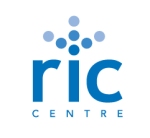 Ali Asaria and Well.ca are changing the way Canadians buy online. We’ve covered Well.ca’s funding in 2007 and again in 2009. And today they are announcing an addition $2.3MM in angel financing. That’s crazy, $2.3MM in angel financing. The financing includes some very interesting individuals including:
Ali Asaria and Well.ca are changing the way Canadians buy online. We’ve covered Well.ca’s funding in 2007 and again in 2009. And today they are announcing an addition $2.3MM in angel financing. That’s crazy, $2.3MM in angel financing. The financing includes some very interesting individuals including:
- Matt Mullenweg, founder of WordPress (AngelList profile)
- Jeff Fluhr, co-founder of StubHub.com (AngelList profile)
- iNovia Capital (as an angel investor)
- Follow on from Jordan Banks and David Ceolin
That’s right, I’m guessing that some pretty prominent angels from AngelList are investing in Canadian companies. If that’s not changing the game of raising money in Canada, I don’t know what is. Ali has done a great job bringing together a Canadian institutional investor (who is smartly adapting to a changing game) with local and international angels.
What’s the money for?
Growth. Well.ca has opened a Toronto office in the new CSI Annex at Bloor and Bathurst. They have recently hired Paige Malling as VP, Marketing away from Sears.ca. The money is going to expansion. I learned today that Well.ca is the largest online diaper retailer in Canada. You don’t need to be a parent to know that diapers are a big deal, Amazon just spent $540MM on diapers (well Diapers.com). The Well.ca team has figured out the backend systems to attract customers, fulfill orders and generate revenue (hopefully a profit). Expanding the categories and footprint into Canadian homes beyond health and beauty is a logical next step. It reminds me of a online retailer based in Seattle, WA that started with books and continues to expand their categories.
Congratulations Ali and the Well.ca! Now that you’ve closed additional funding the hard work starts.
Reposted from StartUpNorth
David Crow is an emerging technology and start-up advocate/evangelist. David blogs at http://davidcrow.ca/ and http://startupnorth.ca/ or follow him on Twitter @davidcrow.
 The RIC blog is designed as a showcase for entrepreneurs and innovation. Our guest bloggers pro vide a wealth of information based on their personal experiences. Visit RIC Centre for more information on how RIC can accelerate your ideas to market.
The RIC blog is designed as a showcase for entrepreneurs and innovation. Our guest bloggers pro vide a wealth of information based on their personal experiences. Visit RIC Centre for more information on how RIC can accelerate your ideas to market.









































 By Henry Vehovec
By Henry Vehovec  While some projects appear to be quite far along the development curve with signed product and service supply agreements and financing, many developers are struggling to pull together the financial and technical resources required to submit strong applications. This will certainly limit the number of projects that receive FIT contracts and even those that do may experience significant difficulty in financing and building their projects.
While some projects appear to be quite far along the development curve with signed product and service supply agreements and financing, many developers are struggling to pull together the financial and technical resources required to submit strong applications. This will certainly limit the number of projects that receive FIT contracts and even those that do may experience significant difficulty in financing and building their projects.